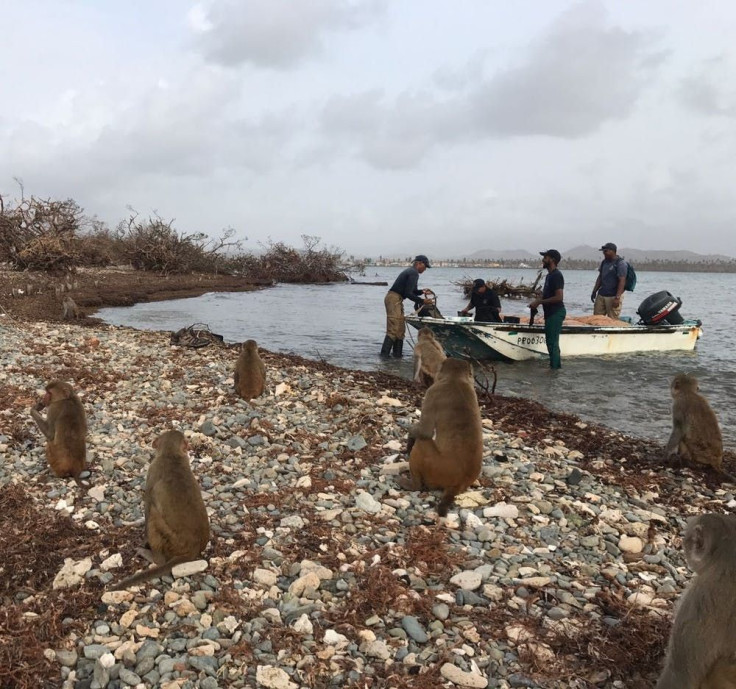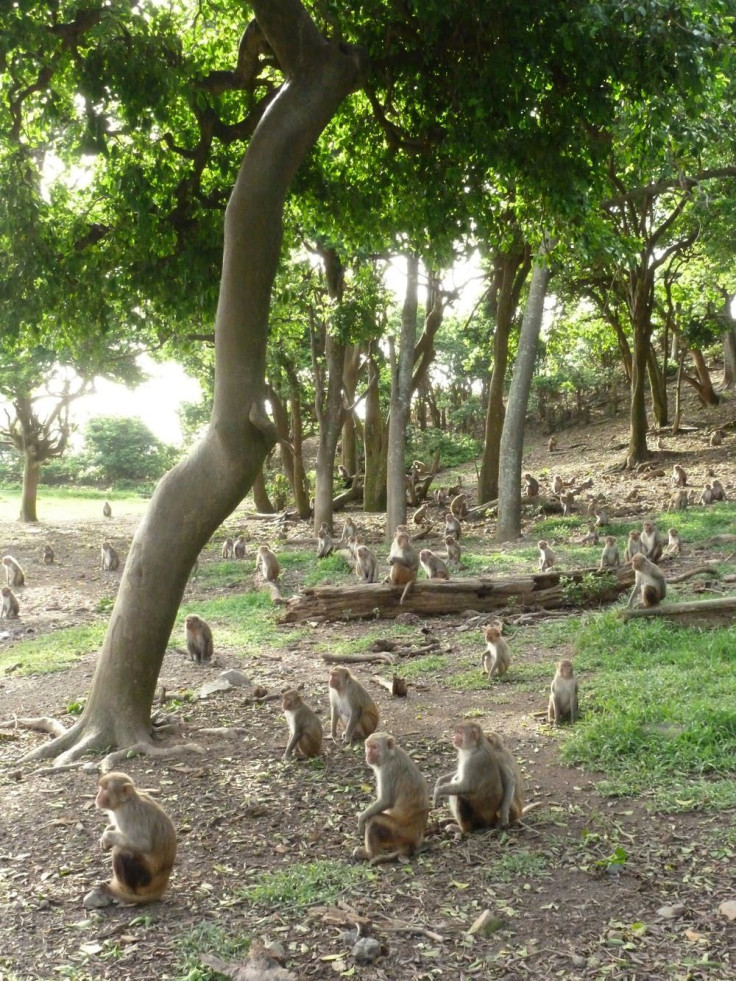Hurricane Maria Aftermath: The Monkey Science Island In Puerto Rico

The crisis that Hurricane Maria caused in Puerto Rico extends beyond just the people on the mainland — a community of rhesus monkeys and the scientists studying them also need help.
One of the researchers, Alexandra Rosati, shared in The Conversation that Cayo Santiago, an island just off the eastern Puerto Rican coast, and the mainland town Punta Santiago across from it were both devastated during the Category 4 storm. And the 1,500 rhesus monkeys that live on the island and the researchers that study them both need help.
The field station at Cayo Santiago is the “longest-running primate field site in the world,” Rosati writes, dating back to 1938 and the site where “generations of monkeys have lived out their life with humans watching.” Those human scientists are looking to understand things as varied as how the monkeys solve problems, how they make friends and mate and how they display other behaviors. “This microcosm of monkey society opens the door onto these highly intelligent and social primates’ lives — thereby allowing us to better understand our own.”
The monkeys live on the island while the researchers live in Punta Santiago.
Cayo Santiago was two swaths of land connected by a small strip called an isthmus, but the hurricane put that isthmus underwater and flooded and killed the vegetation, as well as destroyed infrastructure and lab space. Many of the monkeys survived the storm, but the island is not as hospitable as it was before the hurricane, with a shortage of fresh water. The researchers on the mainland also are without clean water and power.
According to Rosati, there are GoFundMe sites to raise relief funds for both the monkey island and the Punta Santiago community. “Now we are organizing shipments of equipment that is critical for both humans’ and animals’ welfare, such as cisterns, water purification systems and satellite phones,” she wrote. “The station has a supply of food for the monkeys, but we must ensure that it does not run out, especially now that all of the natural vegetation they could eat is gone. Over the long term, we are organizing to rebuild the research infrastructure that was destroyed.”

Cayo Santiago is not the only point of scientific research that was hit by the hurricane. However, the Arecibo Observatory, the home of a radio telescope southwest of the Puerto Rican capital San Juan, was doing better and was expected to reopen and continue scanning the skies.
To understand the full extent of the damage to Puerto Rico as a whole, NASA has released detailed satellite images that show how many electric lights on the Caribbean island are visible from the sky at night, as compared to how many were typically visible on a clear night before Hurricane Maria blew through. The space agency has shared the images to help first responders organize their relief efforts and determine where to focus their resources in a place where many people are still living without power a couple of weeks after the storm.

© Copyright IBTimes 2025. All rights reserved.





















